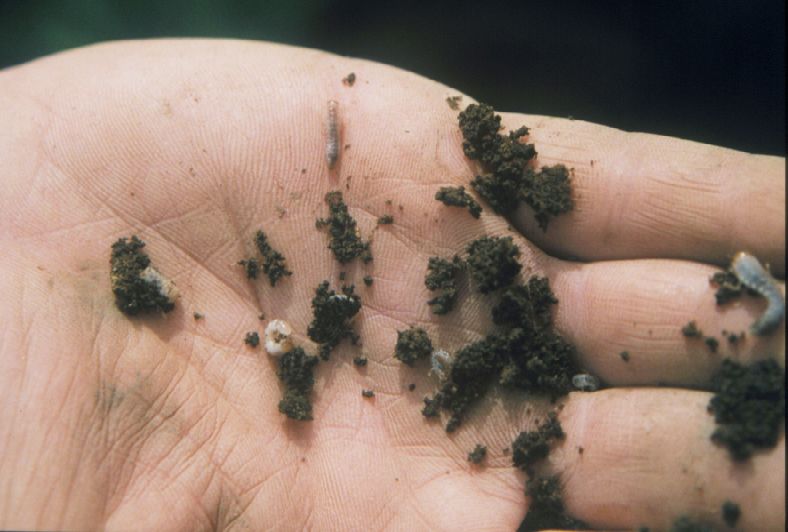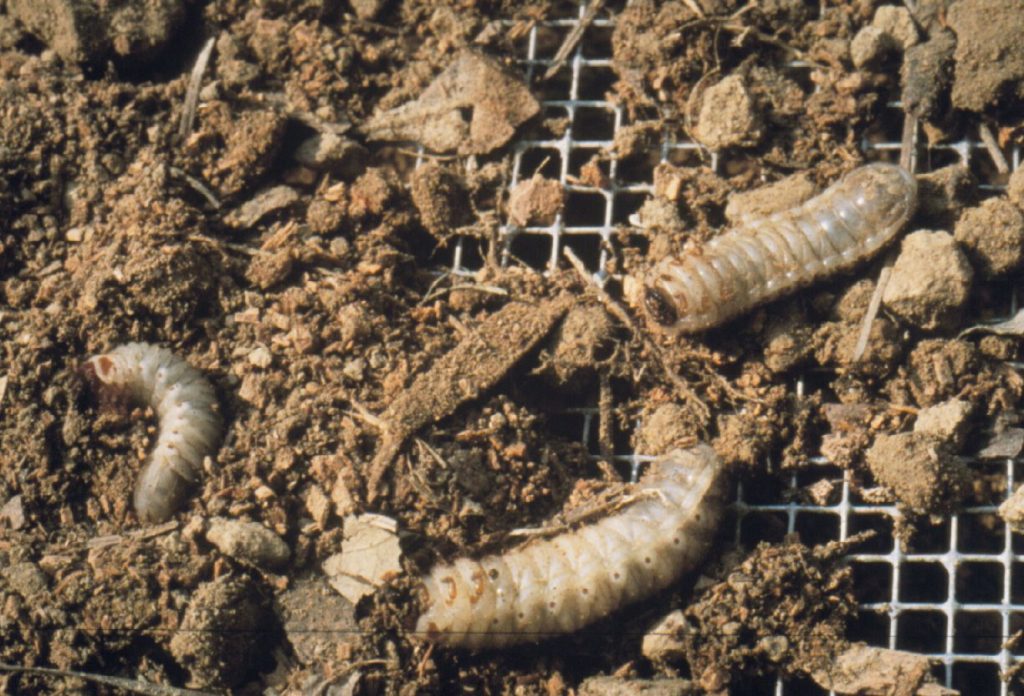Scouting for White Grubs
go.ncsu.edu/readext?792421
en Español / em Português
El inglés es el idioma de control de esta página. En la medida en que haya algún conflicto entre la traducción al inglés y la traducción, el inglés prevalece.
Al hacer clic en el enlace de traducción se activa un servicio de traducción gratuito para convertir la página al español. Al igual que con cualquier traducción por Internet, la conversión no es sensible al contexto y puede que no traduzca el texto en su significado original. NC State Extension no garantiza la exactitud del texto traducido. Por favor, tenga en cuenta que algunas aplicaciones y/o servicios pueden no funcionar como se espera cuando se traducen.
Português
Inglês é o idioma de controle desta página. Na medida que haja algum conflito entre o texto original em Inglês e a tradução, o Inglês prevalece.
Ao clicar no link de tradução, um serviço gratuito de tradução será ativado para converter a página para o Português. Como em qualquer tradução pela internet, a conversão não é sensivel ao contexto e pode não ocorrer a tradução para o significado orginal. O serviço de Extensão da Carolina do Norte (NC State Extension) não garante a exatidão do texto traduzido. Por favor, observe que algumas funções ou serviços podem não funcionar como esperado após a tradução.
English
English is the controlling language of this page. To the extent there is any conflict between the English text and the translation, English controls.
Clicking on the translation link activates a free translation service to convert the page to Spanish. As with any Internet translation, the conversion is not context-sensitive and may not translate the text to its original meaning. NC State Extension does not guarantee the accuracy of the translated text. Please note that some applications and/or services may not function as expected when translated.
Collapse ▲Scientific name: Phyllophaga and Polyphylla species
Where from: Native to North America
Type of pest: Kills young trees

Small white grubs on hand
Pest description:
- White grubs are the immature stage of scarab beetles. They live in the soil for up to 3 years before maturing into the adult beetle. White grubs have a white body with six legs and a dark head and usually lie in a curled or C-shaped position. Grubs of the same species will vary from very small to the size of your thumb depending on how old they are and the species.
- Not all grubs eat tree roots. White grubs are identified to species by looking at the raster pattern, which is the pattern of hairs at the tip of the abdomen. The raster pattern is easier to distinguish in older grubs.

All the feeder roots have been eaten off of this seedling root system
Damage to tree: White grubs eat Fraser fir roots especially of young plants, leaving few feeder roots and stripping the bark off of main roots. This causes the tree to turn yellow and/or wilt, and eventually turn rust brown and die.
Where found in field: The distribution of grubs in a field is typically spotty.
Where found in the tree: Found in the soil. They move deeper in the soil in the winter and are in the root zone during the growing season.
Scouting method:
- Look for grubs in areas where trees have died or in fields prior to planting. Evidence of animals such as skunks digging may also indicate grubs are present. Dig 2-3 holes in a block and sift through the soil to look for grubs.
- White grubs move deep into the soil during cold weather. Therefore, they may be hard to find in the early spring before soil temperatures warm. Some grubs will be pupating and molting to the adult beetle any time from May through August depending on the species. Then adult beetles will lay eggs and new grubs will appear in the soil in late summer. Therefore, it is best to scout for grubs in the early fall. However, you can get an idea of the grub population any time during the growing season. Just realize those numbers may increase.
How weather affects: As with Phytophthora root rot, tree symptoms of white grub feeding are more pronounced in hot, dry weather.
How to develop treatment threshold:
- If setting trees into pastures, assume grubs are present and treat transplant roots with an insecticide.
- After planting, treat for grubs if an average of more than one grub is found per hole examined.
What can be confused with this pest/damage:
- Many things can cause young trees to die, including Phytophthora root rot and other root diseases. Newly set trees may die because of poor storage and handling before setting, poor planting practices, or dry weather after planting. White grubs are the only pests that will eat off transplant roots. By digging in the soil around the plants, grubs can usually be found and identified.
-

Green June beetle grubs appear to ‘crawl’ on their backs. They do not feed on tree roots.
There is a white grub in the soil that does not feed on plant roots but rather on the thatch on the surface of the soil. This is the green June beetle grub. When laid on the ground, it will “crawl” on its back, not using its legs to move. These grubs come to the soil surface each night. If you apply a pesticide and see dead grubs on the ground the next day, you have only controlled the green June beetle grubs and not the grubs that are feeding on your roots.
- The black vine weevil grub looks somewhat similar to white grubs but has no legs. The black vine weevil has occasionally caused problems in seedbeds but not in field trees.
- The oriental beetle grub, Anomala orientalis, has also been identified feeding on roots of Fraser fir seedlings in lineout beds.
Important natural enemies: There are many predators and parasitoids of white grubs. One of particular importance in the mountains is the Tiphia wasp. This wasp feeds on flowering trees such as tulip poplar before laying eggs inside grubs in the soil.
For more information on white grubs including photographs and control recommendations see Grubs & Other Root Feeding Pests.
For the complete Fraser fir scouting manual for western North Carolina, see Scouting Manual.


